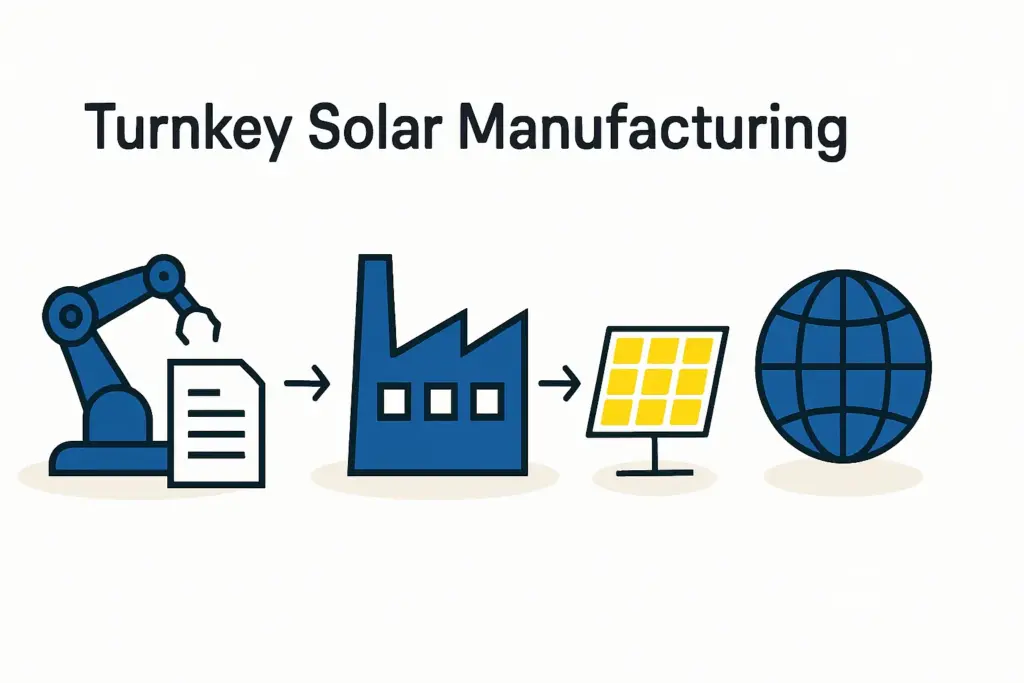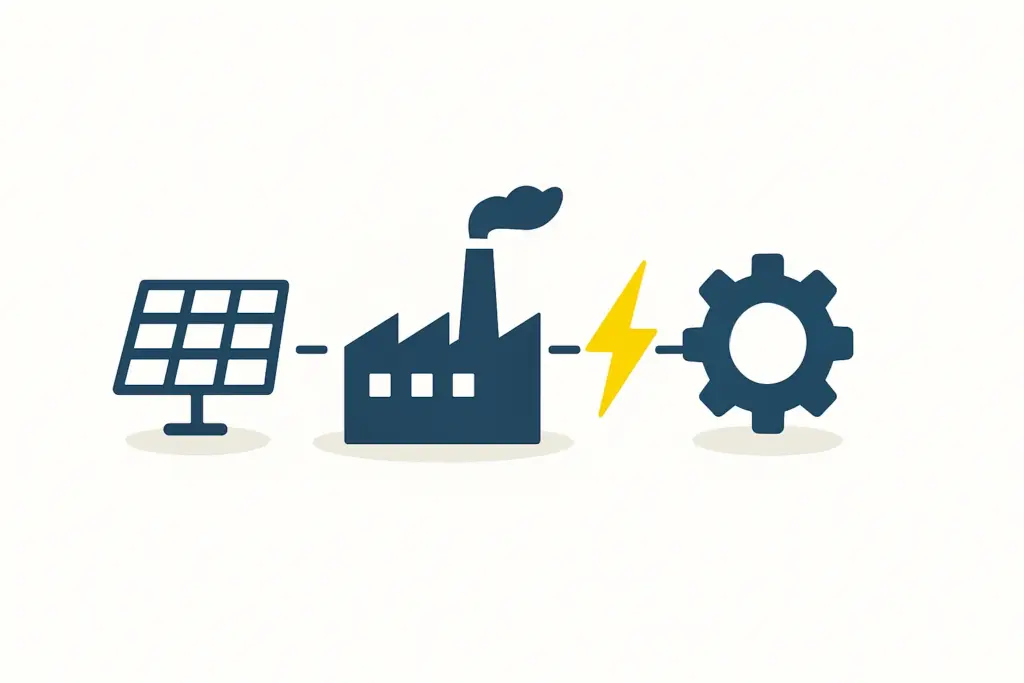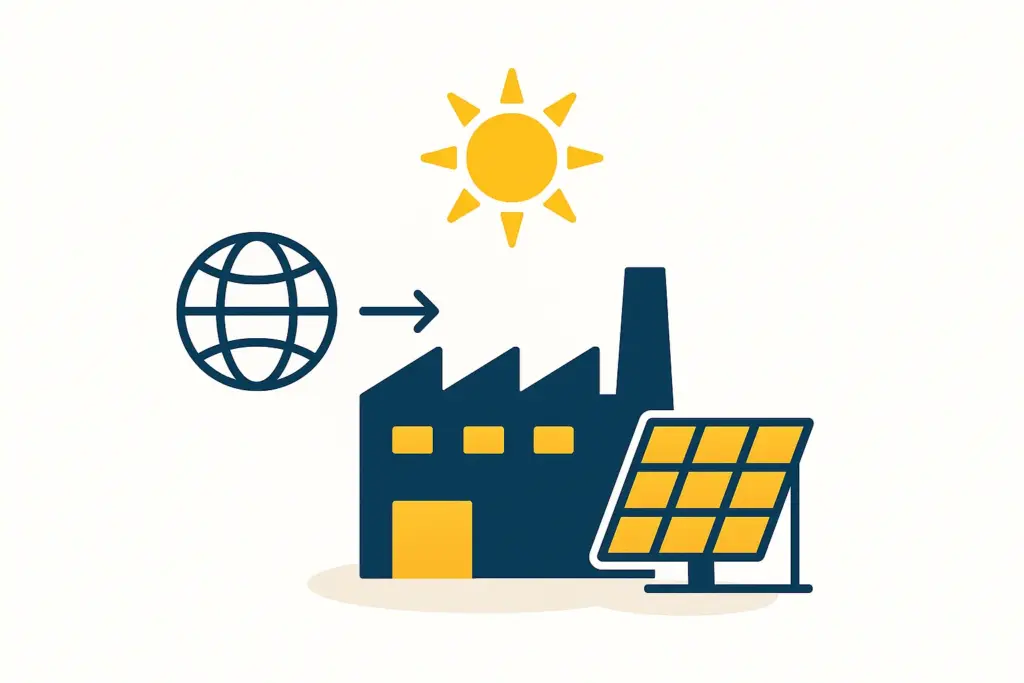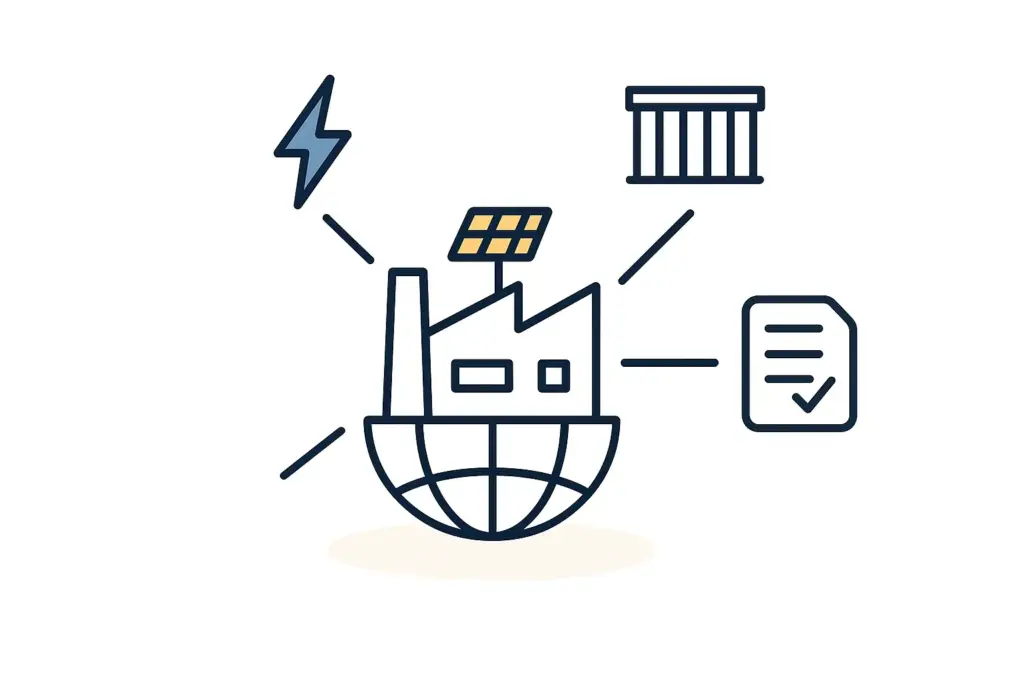Discover comprehensive insights into the statistics, market trends, and growth potential surrounding the solar panel manufacturing industry in Algeria
- world data info. “The climate in Algeria.” Accessed May 17, 2024. Available from https://www.worlddata.info/africa/algeria/climate.php#:~:text=Region%2C%20Alger%2C%20Constantine%2C%20Eastern%2C%20Oran%2C%20Temperature%20max,h%2C%202%2C884%20h%2C%203%2C249%20h%2C%202%2C957%20h%2C
- climate.top. “Sunshine & Daylight Hours in Algiers, Algeria.” Accessed May 17, 2024. Available from https://www.climate.top/algeria/algiers/sunlight/#:~:text=There%20is%20an%20average%20of,haze%20or%20low%20sun%20intensity.
- Zaghba, Layachi, Messaouda Khennane, Saad Mekhilef, Amor Fezzani, and Abdelhalim Borni. “Experimental outdoor performance assessment and energy efficiency of 11.28 kWp grid tied PV systems with sun tracker installed in Saharan climate: A case study in Ghardaia, Algeria.” Solar Energy, vol. 243, September 1, 2022, pp. 174-192. https://doi.org/10.1016/j.solener.2022.07.045.
- Statista. “Price of electricity among households and businesses in Algeria as of June 2023 (in Algerian dinars per kilowatt hour).” Accessed May 17, 2024. Available from https://www.statista.com/statistics/1283693/price-of-electricity-among-households-and-businesses-in-algeria/#:~:text=As%20of%20June%202023%2C%20the,a%20kilowatt%20hour%20of%20electricity.
- Statista. “Solar power capacity in Algeria from 2012 to 2022 (in megawatts).” Accessed May 17, 2024. Available from https://www.statista.com/statistics/1370923/solar-energy-capacity-in-algeria/#:~:text=In%202022%2C%20the%20total%20solar,at%20599%20megawatts%20in%202022
- Enerdata. “Sonelgaz signs deals for the development of 3 GW of solar capacity in Algeria.” Enerdata Daily Energy News, March 2024. Accessed May 17, 2024. https://www.enerdata.net/publications/daily-energy-news/sonelgaz-signs-deals-development-3-gw-solar-capacity-algeria.html
- EIA – International Energy Information Administration. “Algeria.” Accessed May 17, 2024. https://www.eia.gov/international/analysis/country/DZA
- “Newly Updated Renewable Energy Program in Algeria.” Jones Day. Accessed May 17, 2024. https://www.jonesday.com/en/insights/2015/04/newly-updated-renewable-energy-program-in-algeria
- “Energy Industry in Algeria.” Advanced Energy Technologies. Accessed May 17, 2024. https://aenert.com/countries/africa/energy-industry-in-algeria/
- “Energy in Algeria.” Wikipedia. Accessed May 17, 2024. https://en.wikipedia.org/wiki/Energy_in_Algeria
- Boukli Hacene, Mohammed el Amine, Dorin Lucache, et al. “Renewable Energy in Algeria: Desire and Possibilities.” Journal of Energy & Natural Resources Law 55, no. 7 (January 16, 2020) . DOI: 10.1177/0021909619900202. https://journals.sagepub.com/doi/10.1177/0021909619900202?icid=int.sj-full-text.similar-articles.1
- Energy Facts | Energy Partnership Algeria-Alemania (energypartnership-algeria.org), 2023, https://energypartnership-algeria.org/energy-facts/#:~:text=Facts%20&%20Figures&text=Algeria%20has%20been%20able%20to,double%20digit%20yearly%20growth%20rates). (Accessed May 17, 2024)
- Tibermacine, Islam. “Exploring The Feasibility Of Residential Solar Panel Adoption In Algeria’s Arid And Hot Regions: A Cost-Benefit Analysis Of An On-Grid System.” Technium Social Sciences Journal 40 (February 2023): 538-555. DOI: 10.47577/tssj.v40i1.8427. https://www.researchgate.net/publication/368384111_Exploring_The_Feasibility_Of_Residential_Solar_Panel_Adoption_In_Algeria’s_Arid_And_Hot_Regions_A_Cost-Benefit_Analysis_Of_An_On-Grid_System
- Bellini, Emiliano. “Algeria’s Sonelgaz Launches 2 GW Solar Tender.” PV Magazine, February 28, 2023. Accessed May 17, 2024. https://www.pv-magazine.com/2023/02/28/algerias-sonelgaz-launches-2-gw-solar-tender/
- “Development of Solar Energy: A New Turning Point for Algeria.” Africa Energy Portal, March 25, 2024. Accessed May 17, 2024. https://africa-energy-portal.org/blogs/development-solar-energy-new-turning-point-algeria
- Enerdata. “Algeria’s Solar 1,000 MW Project Scheme to Start Producing Power by 2024.” Accessed May 17, 2024. https://www.enerdata.net/publications/daily-energy-news/algerias-solar-1000-mw-project-scheme-start-producing-power-2024.html
- “Oil / Gas / Energy / Mining Average Salaries in Algeria 2024.” Salary Explorer. Accessed May 17, 2024. https://www.salaryexplorer.com/average-salary-wage-comparison-algeria-oil-gas-energy-mining-c4f39
- Worldometer, Algeria Population, Accessed May 17, 2024. https://www.worldometers.info/world-population/algeria-population/
- Local Location – Ouedkniss.com, 2023, – Algérie, https://www.ouedkniss.com/immobilier-location-local/1
- Office Space for Rent Algiers | Serviced Offices | Offices to Let (instantoffices.com), 2023, https://www.instantoffices.com/en/dz/office-space/algiers
- “Algeria – Country Commercial Guide.” Trade.gov. January 31, 2023. Accessed May 17, 2024. https://www.trade.gov/country-commercial-guides/algeria-renewable-energy
- Enerdata. “Sonelgaz Launches a 700 km Transmission Project to Link Algeria’s Power Grids.” May 2023. Accessed May 17, 2024. https://www.enerdata.net/publications/daily-energy-news/sonelgaz-launches-700-km-transmission-project-link-algerias-power-grids.html
- “Statista. ‘Share of Population Having Access to Electricity in Algeria from 2011 to 2021.’ https://www.statista.com/statistics/1229320/share-of-population-with-access-to-electricity-in-algeria/#:~:text=Population%20with%20access%20to%20electricity%20in%20Algeria%202011%2D2021&text=The%20share%20of%20the%20population,the%20observed%20period%20in%
- “Algeria Electricity Access 1960-2024.” Macrotrends. Accessed May 17, 2024. https://www.macrotrends.net/global-metrics/countries/DZA/algeria/electricity-access-statistics#:~:text=Access%20to%20electricity%20is%20the,a%200.14%25%20decline%20from%202018.
- “Algeria Powers Ahead with Huge Renewable Energy Plans.” IEF. June 21, 2021. Accessed May 17, 2024. https://www.ief.org/news/algeria-powers-ahead-with-huge-renewable-energy-plans
- “2023 Investment Climate Statements: Algeria.” U.S. Department of State. Accessed May 17, 2024. https://www.state.gov/reports/2023-investment-climate-statements/algeria#:~:text=In%20practice%2C%20however%2C%20the%20government,the%2051/49%20investment%20rule.
- Gupta, Mohan. “Unleashing Solar Potential: Insights Into Algeria’s Solar Market Outlook For 2023.” Solar Quarter, July 7, 2023. Accessed May 17, 2024. https://solarquarter.com/2023/07/07/unleashing-solar-potential-insights-into-algerias-solar-market-outlook-for-2023/#:~:text=Grid%20Modernization%20and%20Infrastructure%20Development,of%20solar%2Dgenerated%20electricity%20smoothly.
- “Top Five Solar PV Plants in Operation in Algeria.” Power Technology. Updated May 7, 2024. Accessed May 17, 2024. https://www.power-technology.com/data-insights/top-five-solar-pv-plants-in-operation-in-algeria/.
- “Development of Solar Energy: A New Turning Point for Algeria.” Africa Energy Portal (AEP). March 25, 2024. Accessed May 17, 2024. https://africa-energy-portal.org/blogs/development-solar-energy-new-turning-point-algeria#:~:text=The%20second%20call%20for%20tenders,Ghair%2C%20Biskra%20and%20Ouled%20Djellal.
- Zergoun green energy, Accessed May 17, 2024.. https://zergoungreenenergy.com/en/index.php/about/#:~:text=ZERGOUN%20GREEN%20ENERGY%20is%20a,over%20200%20MW%20per%20year.
- SCET Algérie Energie, Accessed May 17, 2024.. , https://www.scetenergie.com/
- Shariket Kahraba wa Taket Moutadjadida, SKTM, Accessed May 17, 2024., https://www.devex.com/organizations/shariket-kahraba-wa-taket-moutadjadida-sktm-122921



























